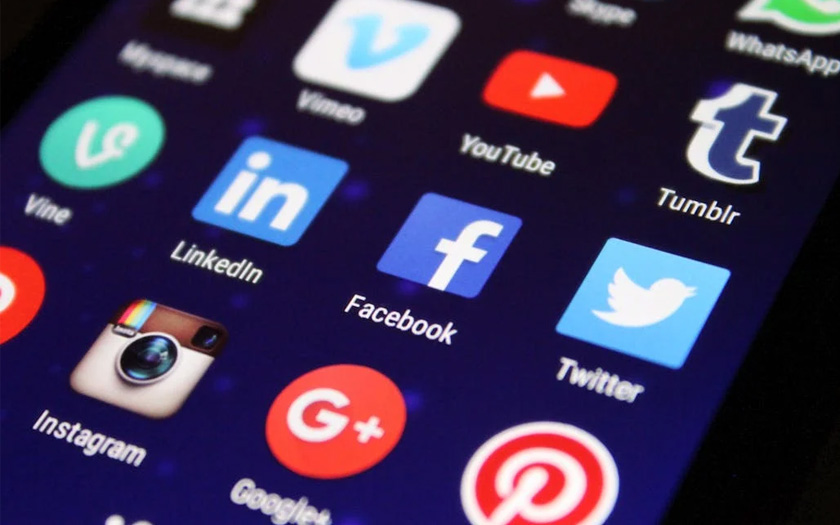How to create a digital-first brand and why modern brands build for the screen first

Filed Under Strategy
What is a digital-first brand and how do you build one?
In a world where audiences are mobile-first and attention is measured in nanoseconds, the idea of branding evolved to meet the new screen focussed paradigm. We are now in the era of digital-first brands — brands built with the digital experience at their core, not as an afterthought.
Digital-first branding is the practice of creating a brand identity and strategy that prioritises digital environments before any other channel. This means logos that scale effortlessly on screens, messaging that connects instantly on social media and customer experiences delivered seamlessly across all devices. It’s about designing for clicks before print, interaction before impression and flexibility over rigidity.
In many regards, digital-first branding applies the same core lessons as traditional branding, with some key differences.
Why Digital-First Brands Matter More Than Ever
As consumer behaviour shifted towards mobiles, social discovery and digital engagement, so too has branding. Agencies are responding by developing identities that thrive in the fast-paced digital world. Every scroll, tap and swipe is an opportunity for brands to deepen their connection and their offerings must be built for these scenarios.
The pandemic accelerated the need for digital experiences and products. Brands that invested in digital-first strategies outperformed those who lacked the foresight. eCommerce soared, social platforms became primary hubs and B2B businesses also had to rethink their connection and engagement. Today we see the most traditional institutions (banks, healthcare providers etc) are embracing these new digital-first approaches.
As renowned designer Michael Bierut once said, “Modern brands don’t live in the corner of a billboard anymore—they live in your pocket, on your screen and in your feed.”
Pitfalls to Avoid
Going digital-first isn’t about downsizing your logo or launching a trendy feed. One of the most common pitfalls is inconsistency across platforms. A beautifully designed mobile app means little if your LinkedIn presence is unaligned to who you are and what you are about.
Another mistake is ignoring accessibility. Digital-first brands must be built for all users – including those with impairments. If your website isn’t WCAG-compliant or your colour contrast isn’t legible, your brand risks being both inaccessible and inauthentic. Again, the basic rules of branding are carried forward. What works well for brands works well for all consumers, regardless of the cognitive abilities. See our work for UTB for example of a digital first brand that works for all abilities.
And finally, many businesses fall into the trap of ‘form over function’. Slick design without a clear message or purpose is noise. Digital-first brands which translate to digital-only have not learned the core skills of leading brand. A brand’s heart — its values, story and voice – are as important int the digital realm as any other.
Opportunities to Seize
On the flip side, digital first brands unlock powerful opportunities. They’re easier to test, adapt and evolve in real-time. You can track every interaction, measure CEX performance and optimise the experience using live data. Reiteration and enhancement can be an hourly update in the digital realm.
A digital-first brand naturally extends into immersive experiences — think AR filters, interactive content and AI-driven personalisation. Done well, such experiences can create deeper emotional engagement than traditional advertising methods.
More importantly, digital first brands can foster community. By speaking with rather than at their audiences, across a plethora of digital channels; brands can become more human and more trusted. Brands are ultimately about building relationships from recognition and this is enhanced in the digital realm.
The Digital-First Brand Checklist
For brand owners, here’s a strategic 10-point checklist to ensure your next identity doesn’t just survive online—it thrives:
- Start with Strategy: Define your mission, audience and positioning from a digital-first perspective
- Design Responsively: Ensure your logo, typography and layout scale effortlessly across devices
- Prioritise Mobile: Build experiences for thumbs, not mice
- Craft a Clear Voice: Develop tone and messaging that resonates across social, apps and websites
- Embrace Motion: Use animation and transitions to bring your brand to life
- Be Accessible: Design with inclusive standards from the start
- Stay Consistent: Maintain visual and verbal identity across all digital touchpoints
- Leverage Data: Track engagement to refine your brand continuously
- Create Content Ecosystems: Build scalable systems for visual and editorial content
- Empower Your Team: Provide digital brand guidelines and toolkits for internal use
In summary
In the end, digital first brands are more than just future-ready—they’re now essential. They reflect how people live, work and communicate today. For agencies and businesses alike, the real challenge isn’t creating digital assets—it’s crafting identities that perform beautifully, consistently and meaningfully in an ever-connected world.
Want to build a brand that’s as flexible as it is fearless? Go digital-first—and do it with intention.
___
Want to work on your brand’s messaging strategy? Let’s start today and help authentically connect with people who share your beliefs. Email us today.

The leading firms in today’s market are build utilising a digital-first brand strategy.
Modern brands don’t live in the corner of a billboard anymore—they live in your pocket, on your screen and in your feed.

